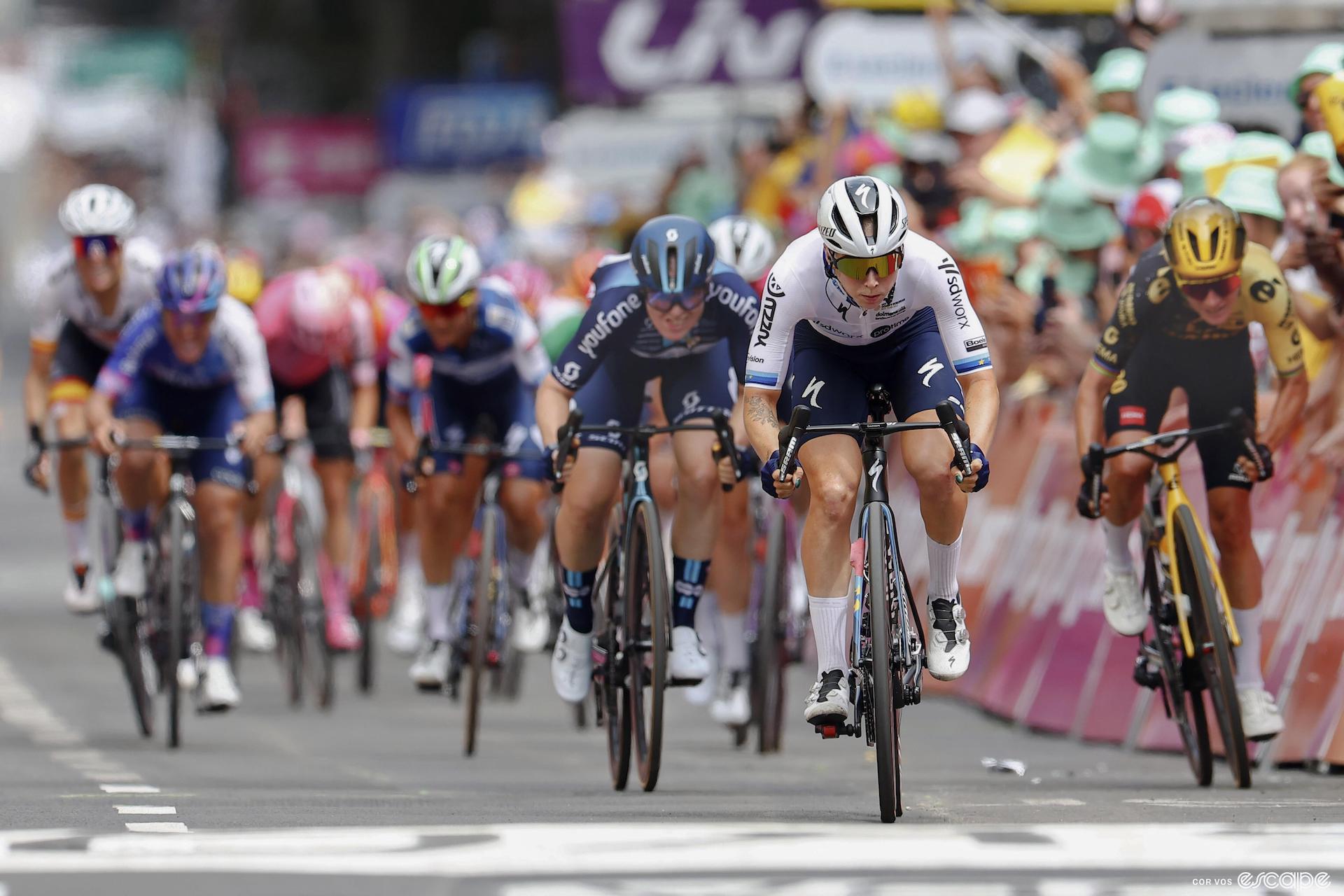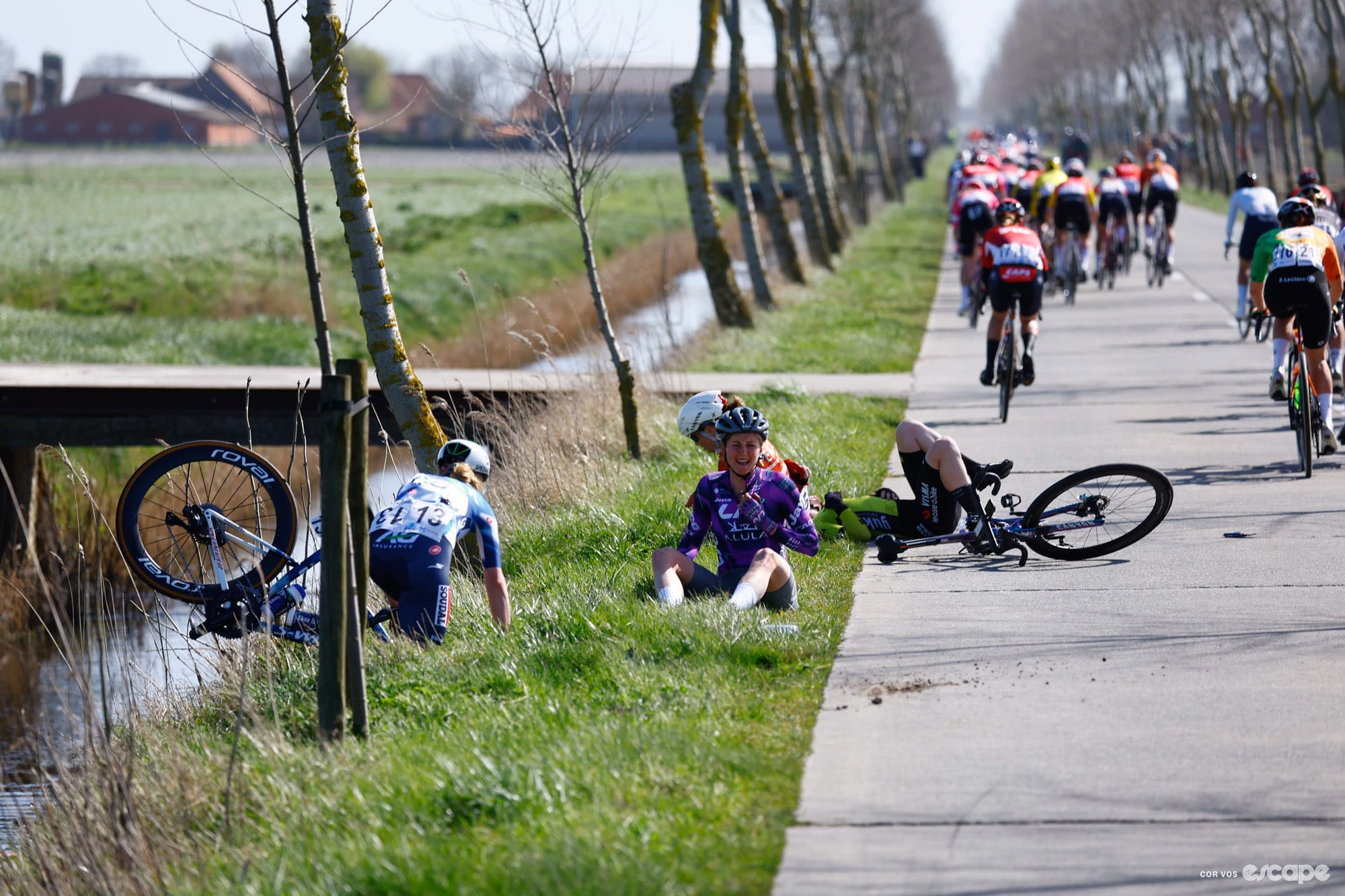Perhaps, in hindsight, Lotte Kopecky winning the first stage of the Tour de France Femmes was inevitable. SD Worx was heavily favoured to take the stage, but all eyes were on Lorena Wiebes in the fast finale, not the Belgian national champion. C'est la vie. The Wiebes expectations weren't completely misplaced as the European champion did ride in for second.
There is no doubt that Kopecky had the legs on Côte de Durtol; her attack with 9.7 km to go proved it. In the reduced bunch, the other riders were busy watching Kopecky's teammates Demi Vollering and Marlen Reusser, with Wiebes still dangling off the back of the group, when the Belgian made her move.
When SD Worx has so many options, it's hard to keep an eye on all of them.
"I forgot about the fact that she’s still there," Canyon-SRAM's Kasia Niewiadoma said of Kopecky at the finish. "I think I really messed up when Lotte went. I just lost a couple of seconds trying to get out of Ashleigh Moolman’s wheel because she was there, kind of blocking me. I think we could have had better results."
"She just came with speed from behind – it was the element of surprise," Moolman Pasio said of the attack. "In hindsight, maybe I'm kicking myself because I knew she was gonna go, so why didn't I just sit [on] her wheel? Why do I get caught up sitting Demi's wheel? But I suppose it also makes sense."
"Demi's here to ride the GC, I'm here to ride the GC. So yeah, nothing is lost today. Of course, it was a final that suited Lotte."
Kopecky went over the top of the climb with a gap of only a few seconds, and with 9.3 km to go the race was far from over, but the run into town consisted of a technical descent and some twisting through the streets of Clermont-Ferrand.
The gap to Kopecky grew as the Belgian made her way towards the finish in large part to a disorganized chase behind. FDJ-Suez, with three riders in the group, sent Evita Muzic to the front to work, and Moolman Pasio was putting in turns as well, but Canyon-SRAM, who had two in the group in Niewiadoma and Chabbey, weren't helping keep the pace high.
"Sometimes it feels like no one wants to work together," Niewiadoma said at the finish. "Because, I don’t know, everyone has a different tactic or strategy in mind."
According to Moolman Pasio, in the chase the riders are talking to each other, outside of the directors of rival teams discussing lining up against SD Worx, but when it actually comes down to it in the race the effort doesn't match up.
"I know there were a lot of SD Worx there and as we’ve seen a lot this year, it’s hard to get organised when there’s a lot of them," Amanda Spratt of Lidl-Trek said of the chase. Spratt was in the second chase on the road, a group that eventually rejoined with the main chase, allowing Wiebes to sprint for second.
Niewiadoma said the fact that the groups came back together was a clear indication that her group was not working well together.
"It was so annoying," Moolman Pasio said of the disorganization in the chase. "Obviously I expected that Kopecky might do something but when Marlen and Demi were going so hard on the front, I thought, 'OK, well, maybe they're trying to neutralize it.' But I mean, kudos to her. She came with speed from behind."
"Kasia and I got pretty close but then as the descent started, it was so frustrating. It wasn't actually my job to chase because there were multiple riders from other teams. But at the same time, I didn't want to just sit up. So I tried to keep things going. And then I don't understand the mentality to attack/counterattack. Because if we work together, we could bring her back."
Indeed, once the groups came back together, and with Reusser, Wiebes, and Vollering present, the chase gave up almost completely. Instead of working together to close the distance to the solo leader Niewiadoma attacked, trying to inspire a speedier run to the line. The moves only slowed the group down and afforded Kopecky more time out front.
With the lack of an organized chase Kopecky rode into the yellow jersey, with a buffer of 45 seconds ahead of the second stage.
Did we do a good job with this story?





